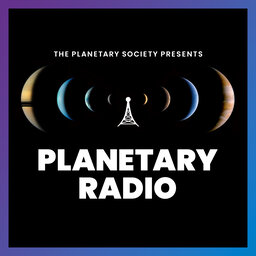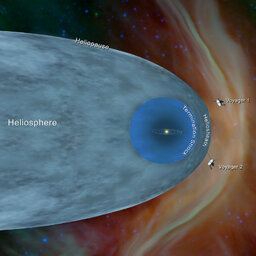
Planetary Radio: Space Exploration, Astronomy and Science
Planetary Radio brings you the human adventure across our solar system and beyond. We visit each week with the scientists, engineers, leaders, advocates, and astronauts taking us across the final frontier. Regular features raise your space IQ while they put a smile on your face. Join host Sarah Al-Ahmed and Planetary Society colleagues including Bill Nye, the Science Guy, and Bruce Betts, chief sc…Social links:

Voyager and the heliopause: Exploring where the Sun gives way to the stars
What does it really mean to enter interstellar space, and what have we learned since humanity first crossed the invisible boundary between our Sun and the stars? In this episode of Planetary Radio, we explore the science of the heliosphere and the realm beyond with Linda Spilker, project scientist…
58:39Clean
Space Policy Edition: Change for the Sake of Disruption at NASA
Marcia Smith, the founder and editor of Space Policy Online, joins the show and revisits a conversation we had one year ago, recorded just weeks before the second Trump administration took office. That episode, “The Challenges of Change at NASA,” explored the institutional and political roadblocks …
1:11:20Clean
Looking back: Space exploration in 2025
As 2025 comes to a close, Planetary Radio looks back on a year that reshaped space exploration, through stunning discoveries, major milestones, unexpected challenges, and the people who carried science forward through it all. In this episode, Sarah Al-Ahmed, host and producer of Planetary Radio, i…
1:08:54Clean
Looking back: Space policy and advocacy in 2025
2025 was one of the most consequential years for space policy in modern U.S. history. In this special year-in-review episode, Planetary Radio takes a deep dive into what happened behind the scenes in U.S. space policy and advocacy as NASA faced unprecedented proposed cuts to its science programs. …
57:55Clean
Book Club Edition: MOONS: The Mysteries and Marvels of our Solar System by Kate Howells
It was such a delight to feature work by our own Kate Howells in The Planetary Society’s member book club. We keep Kate busy as our public education specialist, but she found time to write about many of her favorite natural satellites in this richly illustrated edition. Join her and book club host …
59:26Clean
Galileo at 30: How a mission transformed our understanding of Jupiter
Thirty years ago, NASA’s Galileo spacecraft became the first mission to orbit Jupiter, opening a new chapter in our exploration of the outer Solar System. Over eight years around Jupiter, Galileo transformed how we understand Jupiter and its moons, revealing a powerful and dynamic planetary system,…
57:38Clean
Space Policy Edition: The Moral Case for Space Science
Why do we explore space, and why does science matter in the first place? In this Space Policy Edition rerun, Planetary Society Chief of Space Policy Casey Dreier revisits a deeply influential 2020 conversation with philosopher and ethicist J. S. Johnson-Schwartz, author of The Value of Science and…
1:08:33Clean
Inside the 2025 Mars Society Convention
The 2025 International Mars Society Convention convened at the University of Southern California this October for three days of passionate discussion about humanity’s future on the red planet. Speakers explored science, policy, technology, AI, synthetic biology, and the long-term path toward becomi…
57:09Clean
ESCAPADE begins its journey to Mars
NASA’s twin ESCAPADE spacecraft have finally launched on their journey to Mars. Designed to study how the solar wind interacts with Mars’ patchy magnetic fields and drives the loss of its atmosphere, ESCAPADE is NASA’s first dual-spacecraft mission to the Red Planet and a major milestone for the SI…
1:06:33Clean
Smart Girl Dumb Questions: Casey Dreier answers why space is worth it
This week on Planetary Radio, we’re sharing a special conversation from our friends at the Smart Girl Dumb Questions podcast. Host Nayeema Raza sits down with The Planetary Society’s Chief of Space Policy, Casey Dreier, to explore one of the most common questions in space exploration: Why does spac…
59:59Clean
 Planetary Radio: Space Exploration, Astronomy and Science
Planetary Radio: Space Exploration, Astronomy and Science